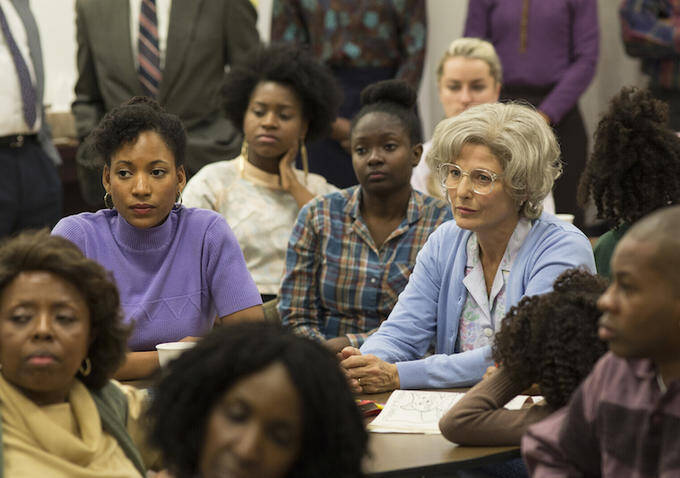Here be spoilers.
I began watching “Show Me a Hero” with very little knowledge of the history the HBO miniseries documents. I tried to keep it that way, to allow the story to surprise me, and for a while I was successful. But then I read the subtitle of the original book by Lisa Belkin, and I began to anticipate the tragedy that was starting to emerge.
“Show Me a Hero, and I’ll write you a tragedy,” we were reminded last week, and I admit, I was a little coy when I wrote, “I am afraid to contemplate what tragedy it will take.” I already kind of knew, and by the beginning of episode 6, I was bracing myself for the inevitable.
All of this is to say you shouldn’t read any further if you want to be surprised yourself.
So, let it be said, the suicide of Mayor Nick Wasisczko is handled with as much sensitivity as the filmmakers can muster. They convey the tragedy of the event while not exploiting it. They suggest a reason for his decision, while also helping us to understand why everyone was so shocked when it happened. For a series that has been marked by a lot of screaming and shouting, in and out of city council meetings, the final moments were appropriately quiet, as the tragedy unfolded before us.
Why did he do it? No one knows for sure, of course, but Wasisczko was clearly addicted to politics and saw no future for himself when he lost his second race for office. (By some unwritten rule, your political career in Yonkers is done after two losses.) “You can’t mistake votes for love,” Vinni Restiano (Winona Ryder) tells Nick in a line that pretty much sums up the show’s explanation for his fate. The mayor killed himself on Election Day, the first one in eight years when his name was not on the ballot.
Not before, however, he was able to see the fruits of his labors. In the final two episodes, families from low-income neighborhoods in West Yonkers begin to move into the townhouses that the city was forced to build by federal decree. They are chosen by lottery, and most of the families we have been tracking—with one notable exception—are lucky enough to land a new home. They are thrilled with their little patch of suburbia, with green lawns out back and trees by their windows. Johnny, the ne’er do well boyfriend of one our protagonists, marvels that their new home has a “staircase and everything.”
Of course, their new neighbors are no so thrilled, and stare at them warily from their front stoops. But over time, the housing comes to resemble what the developers hoped they would—a neighborhood, with families grilling outside on the front lawn and kids running up and down the sidewalks. The mayor wants to see this all for himself, and stops by one night to check in with the residents. Very few know who he is. He’s looking to take a bow, but no one wants to applaud.
It’s a theme touched on again and again. The mayor feels like he should be recognized for his courage, but no one seems willing to give him his due. Everyone else wants to move on. They can see that his name will be forever associated with the city’s ugly housing battle. Nick thinks his political career is just beginning, when everyone else can see it’s coming to an end.
In the show’s final moments, as the city’s politicians file out of church following Wasisczko’s funeral, they look like they’ve been sucker punched. It’s as if they finally recognize that the game that they had been playing had much higher takes than anyone of them knew. For a brief moment, the political battles have been stopped, a truce has been called.
But what happened then? This is a question I’d like to address to some of our readers, some of whom live in Yonkers. Did they mayor’s suicide help bring the city together in any way? Did the housing battles continue? Are the townhouses now considered a success? Are the residents better integrated into the community?
In a postscript, the filmmakers note that Oscar Newman, the federal city planner who fought for the single unit townhouses, is heralded as a visionary whose ideas about public housing are now widely embraced. Perhaps the most prominent example in the news today is the public housing in New Orleans built after Hurricane Katrina. It doesn’t seem like a coincidence that “Show Me a Hero” ends on the weekend when we mark the 10th anniversary of that storm. David Simon wrote and directed “Treme,” a show based on life in New Orleans after Katrina. And it was that storm that brought many issue of class and race to the fore of the national conversation. “Show Me a Hero” continues that conversation, reminding us that sometimes government can help push us forward, even if the motives our leaders are not always so noble.
It’s also a reminder that we have a long way to go. Low-income housing in Westchester is still being fought over, and in places like New Orleans there is not enough public housing to satisfy demand. It’s time to start talking about these issues again. Thanks to David Simon, director Paul Haggis and Lisa Belkin, maybe we will.








